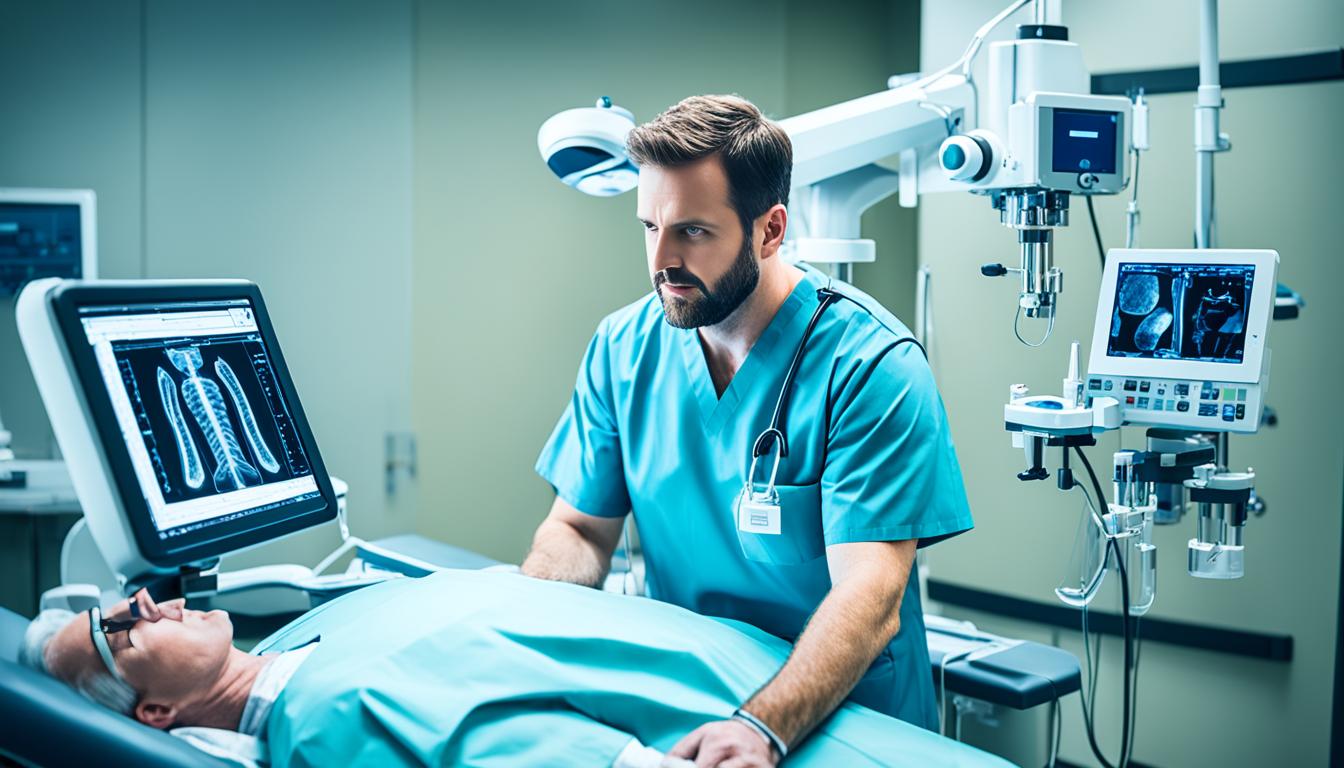Chondrosarcoma is a rare type of bone cancer mainly seen in adults over 40. It can also affect younger people. The cancer starts in the cartilage cells. Symptoms include pain, swelling, and a lump on the bone.
Doctors aren’t sure what causes chondrosarcoma. It’s believed to grow from non-cancerous cartilage tumors. Tests like CT and MRI scans plus a biopsy are needed for a diagnosis.
Surgery is the main way to treat chondrosarcoma. This involves cutting out the tumor and some nearby tissue. Sometimes, radiation is used with surgery. Chemotherapy might be an option if the cancer has spread.
Chondrosarcoma, though rare, has a 5-year survival rate of about 75.2%. But, how well someone does can change with tumor size, location, and if it has spread.
Key Takeaways:
- Chondrosarcoma is a rare form of bone cancer that affects adults over 40.
- Common symptoms include pain, swelling, and the presence of a large lump on the bone.
- Diagnosis involves imaging tests and a biopsy to confirm the presence of cancerous cells.
- Treatment options include surgery, radiation therapy, and chemotherapy.
- Survival rate depends on factors such as tumor size, location, and metastasis.
Types and Risk Factors of Chondrosarcoma
Chondrosarcoma is a rare type of bone cancer found in different parts of the body. It often shows up in the pelvis, upper arm, thigh, and ribs. There are a few kinds of chondrosarcoma, such as conventional and clear cell types.
The conventional type is seen in about 85% of cases. However, dedifferentiated chondrosarcoma is more serious and can come from the conventional type. Younger people might get myxoid chondrosarcoma, which looks a bit different. Clear cell chondrosarcoma is very rare and mainly found in hands and feet.
Doctors don’t know the exact cause of chondrosarcoma. But, they have found some things that might make it more likely to happen. Getting older, bone diseases, and past radiation treatment increase the risk.
Interestingly, family history doesn’t seem to affect the risk of getting this cancer. Scientists are still looking into what might make someone more likely to develop chondrosarcoma.
It’s key to understand the different types and risks of chondrosarcoma. This knowledge helps with spotting the disease early and managing it well. Health experts can keep an eye on those with higher risks. This may lead to better treatment and outcomes.
References:
- Chondrosarcoma Risk Factors. American Cancer Society. Retrieved from https://www.cancer.org/cancer/chondrosarcoma/causes-risks-prevention/risk-factors.html
- Cartilage Tumors. Memorial Sloan Kettering Cancer Center. Retrieved from https://www.mskcc.org/cancer-care/types/cartilage-tumors#chondrosarcoma
Innovative Treatments for Chondrosarcoma
Besides surgery and chemotherapy, new treatments are being explored for chondrosarcoma. Stem cell therapy stands out for its ability to repair damaged tissue in patients with this rare cancer.
Stem cells are unique as they can become different cell types, like cartilage cells. This quality is very beneficial for swapping cancerous cells out with healthy ones. Stem cell therapy aims to make the outlook better for those fighting this hard-to-treat cancer.
Even though stem cell therapy is showing promise, it’s still early in development. But, the initial outcomes bring hope for better treatments. This new method is under close study and getting better over time.

